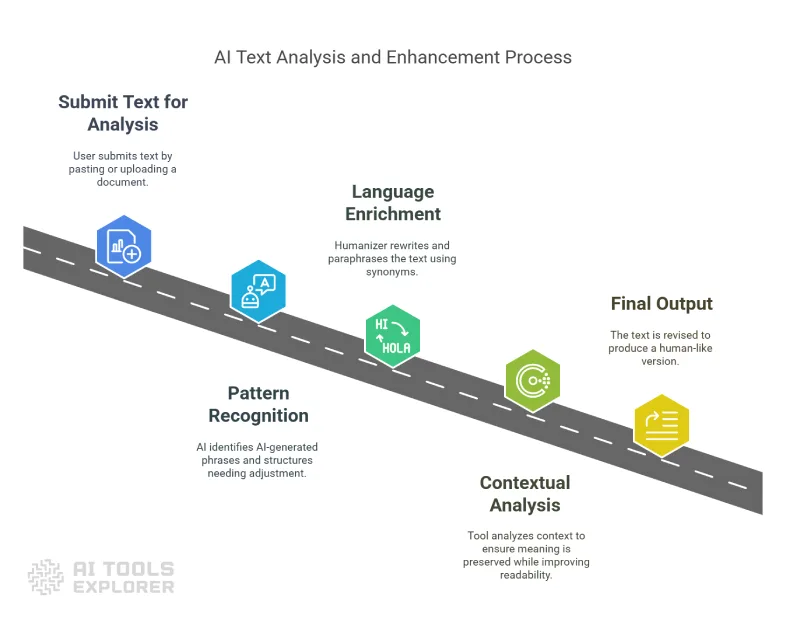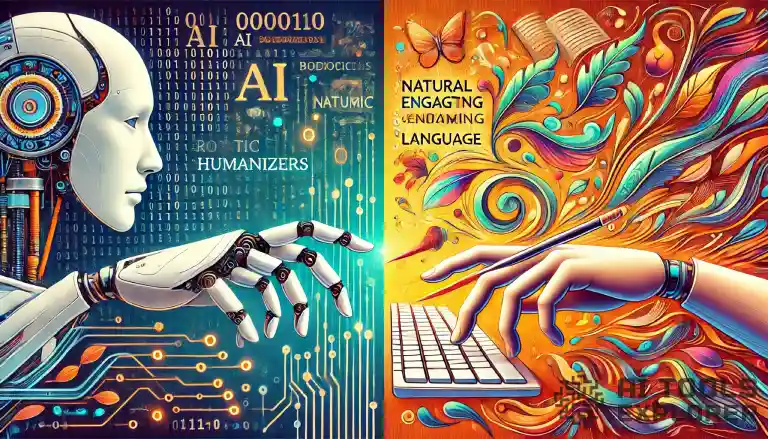Introduction
Imagine you’re reading an article or a piece of writing and it feels like a robot wrote it—bland, stiff, and awkward. This is where an AI humanizer comes in. An AI humanizer is a tool that takes text generated by artificial intelligence and makes it sound more like a human wrote it. This is super helpful in making writing more engaging and easier to read.
The Growing Need for AI Humanizers
Various AI tools are used for writing assistance. AI is found in everything from school essays to marketing materials. However, AI-generated text often lacks the natural flow and warmth of human writing. This can be a problem, especially in areas like academic writing, where it’s important to sound natural to avoid detection by AI content detectors, and in marketing, where engaging content is key to connecting with customers.
In academic settings, students often use AI to help write papers. Some students even submit fully AI-generated assignements without even wondering is using AI for homework cheating? In any case they need their work to sound human to avoid penalties for using AI. In marketing, businesses want their content to attract and keep customers’ attention. AI humanizers help by tweaking AI-generated text to make it more natural and relatable. This makes the content not only more readable but also more effective at achieving its purpose.
AI Humanizer AI Tools To try
What is an AI Humanizer?
An AI humanizer is an AI tool designed to polish AI-generated text, making it sound more like it was written by a person. Or an AI rewriting text and making sure it doesn’t sound as AI. It’s kinda funny but true.
How it works
Once you submit a text to an AI humanizer this is what happens:
Step 1: Pattern Recognition
The AI tool identifies common AI-generated phrases and structures that need adjustment. This helps make the text feel more natural and less robotic.
Step 2: Language Enrichment
The humanizer rewrites and paraphrazes the initial text. It uses synonyms and everyday language to make the text more engaging and relatable.
Step 3: Contextual Analysis
The tool analyzes the context of each sentence to ensure that changes maintain the original meaning while improving readability.
Step 4: Final Output
The result is a revised, human-like version of the text.

User Customization
Some AI humanizers offer custom settings to fine-tune the desired output. This includes adjusting the tone, style, and length to match the specific requirements of their project.
Why Use an AI Humanizer?
There are several good reasons to use an AI humanizer:
- Bypass AI Content Detectors: In schools, students can make sure their work doesn’t get flagged as AI-generated.
- Improve Content Quality and Engagement: Marketers can create more engaging content that keeps readers interested.
- Enhance Human-Like Qualities: For various applications, making AI-written text sound more human helps it connect better with the audience.
Top AI Humanizer Tools
There are many AI humanizer tools out there, each with its own strengths. Here are some of the top ones:
- Undetectable AI: This tool makes AI content feel conversational and helps it bypass AI detection tools.
- AISEO: It enhances SEO by making AI text engaging and personalized.
- WriteHuman: It smoothly converts AI text into natural human language, ideal for various uses.
- Junia: This tool offers pattern recognition, language enrichment, and more, making it great for bloggers and marketers.
Conclusion
AI humanizers help bridge the gap between machine efficiency and human creativity. They make AI-generated text more readable, engaging, and effective. By using these AI apps and tools, writers and marketers can create high-quality content that stands out and connects with their audience.








